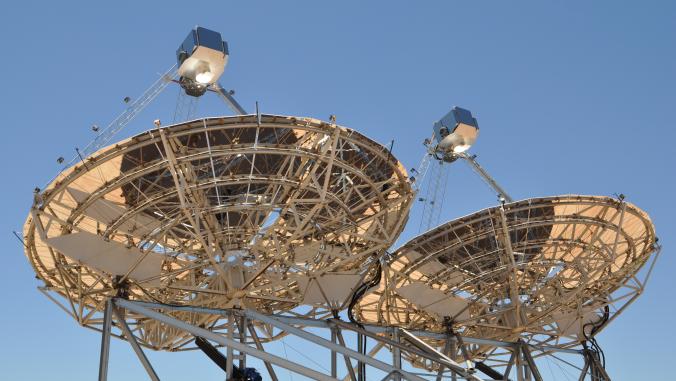Ranking the top U.S. cities for clean energy
A surprising state dominates the list of municipalities shifting to renewable energy.

Dallas, Texas was the surprise No. 1 city on this year's list of cities using the most renewable energy, followed by neighboring Houston.
The Environmental Protection Agency (EPA) specifically rates government use of green power. Other governments in the top five are District of Columbia; Montgomery County, Maryland; and Austin, Texas.
Municipal buildings in Dallas run on 100 percent wind power, and Houston gets half its electricity from a mix of wind and solar.
When we look at all of the top renewable energy users in the U.S. (those in both the public and private sector), two of these cities are still on the list: Intel, Microsoft, Kohl's, Apple, Google, Mars, city of Dallas, Starbucks, U.S. Department of Energy and city of Houston.
Once again, Austin will add a lot more solar, this time 600 megawatts (MW) by the end of 2019. That's in addition to 118 MW approved this year and 150 MW last year, bringing it close to its goal of 35 percent renewable energy by 2020.
This exceeds the entire amount of solar in the state — 300 MW as of 2014, according to the Solar Energy Industries Association. The reason Texas has so little solar is because of a lack of incentives compared to other states, approving the first utility-scale solar projects just last year because of low prices.
Despite strong showing, Texas remains top polluter
Texas leads the nation on wind energy, supplying 10.6 percent of its electricity, but it also still burns lots of coal, gas and oil, maintaining its position as the biggest polluter among U.S. states for the 24th consecutive year, according to the U.S. Energy Information Administration (EIA).
And pollution isn't going down. In 2013, Texas spewed more carbon emissions than since 2004 — almost double that of California. So did other states that are major fossil fuel producers — especially from fracking, which boomed that year.
Calculated per capita, top carbon emitting states are (in this order): Wyoming, North Dakota, West Virginia, Alaska and Louisiana.
And the lowest are (in this order): New York, Vermont and California.

Between 1990-2013, Washington D.C, has driven down emissions the most — an impressive 36 percent — followed by Delaware, New York, Massachusetts and Maryland with declines of 17 to 24 percent. Nebraska's emissions grew the most at 28 percent, thanks to growth in ethanol, which consumes a lot of natural gas.
Across the country, "the general trend is emissions are down and are stable," said Perry Lindstrom, EIA analyst. U.S. emissions are down around 11 percent from the 2005 peak, with emissions falling in 37 states and rising in 13 between 1990 and 2013.
Click here for the full EIA analysis of state emissions from 1990 to 2013.
This story first appeared on:





